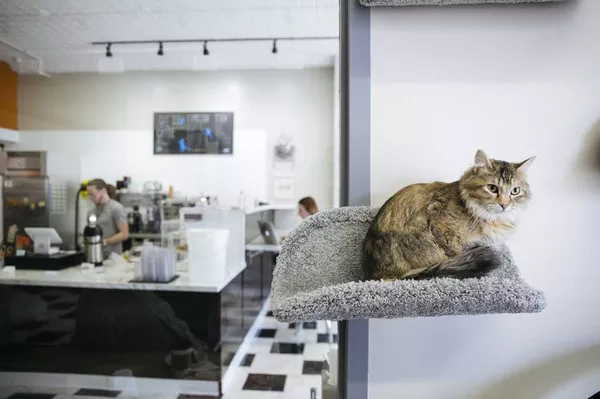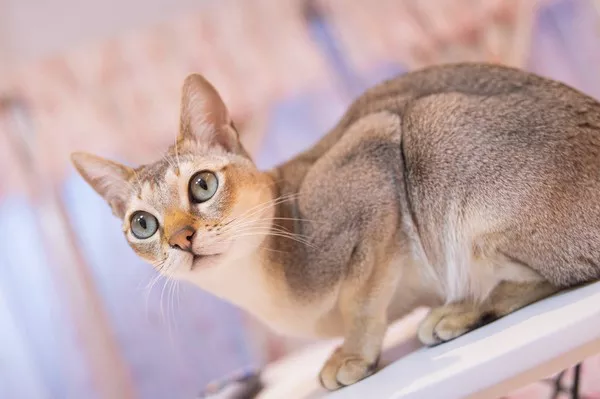Fleas are one of the most common parasites that affect cats, and they can cause a range of health issues, from skin irritations to more serious diseases. While many cat owners believe that keeping their pets indoors provides a safeguard against fleas, the reality is that indoor cats can still become infested. Understanding how indoor cats get fleas is crucial for prevention and control. This essay explores the various pathways through which indoor cats can acquire fleas, the life cycle of fleas, the symptoms of flea infestation, and effective prevention and treatment strategies. By gaining insight into these aspects, cat owners can take proactive measures to protect their feline companions from these pesky parasites.
Understanding Fleas
What Are Fleas?
Fleas are small, wingless insects belonging to the order Siphonaptera. The most common flea species that infests cats is the cat flea (Ctenocephalides felis). Adult fleas are approximately 1-3 mm long, have a flattened body, and are usually brown to black in color. They are known for their ability to jump long distances relative to their size, which aids in their movement from host to host.
Life Cycle of Fleas
The life cycle of fleas is complex and consists of four stages: egg, larva, pupa, and adult. Understanding this life cycle is essential for comprehending how indoor cats can become infested.
Egg Stage: Female fleas lay eggs after feeding on the host’s blood. These eggs are usually deposited on the host but can fall off into the environment, such as carpets, bedding, and furniture. A single female flea can lay hundreds of eggs over her lifetime.
Larval Stage: Flea eggs hatch into larvae within 1-10 days, depending on environmental conditions. The larvae are small, white, and worm-like, and they feed on organic debris, including flea feces, which is composed of dried blood.
Pupal Stage: After several days, the larvae spin cocoons and enter the pupal stage. Flea pupae can remain dormant for weeks or even months, waiting for the right conditions (heat, vibration, or carbon dioxide) to trigger their emergence as adult fleas.
Adult Stage: Once conditions are favorable, adult fleas emerge from the cocoons, ready to find a host. They are attracted to warmth and movement, making pets and humans ideal targets.
How Indoor Cats Get Fleas
Despite being kept indoors, cats can still be exposed to fleas through various pathways. Understanding these routes is essential for prevention.
Introduction from Other Pets
One of the most common ways indoor cats acquire fleas is through contact with other pets that are infested:
Dogs: If a household has both cats and dogs, fleas can easily transfer from dogs to cats. Dogs are often more exposed to outdoor environments where fleas are prevalent, and they can bring fleas into the home.
Other Cats: If an indoor cat interacts with other cats, especially those that go outside, there is a risk of flea transmission. This can happen during playdates, visits to friends’ houses, or even at veterinary clinics.
Environmental Contamination
Indoor environments can harbor flea eggs and larvae, leading to potential infestations:
Flea Eggs and Larvae: Flea eggs and larvae can be present in carpets, rugs, and upholstery. If a cat spends time in these areas, it may come into contact with flea eggs or larvae that have fallen from infested animals.
Flea Feces: Flea feces, often referred to as “flea dirt,” can also be found in the environment. This dark, gritty material is a sign of flea activity and can serve as a food source for flea larvae.
Human Activity
Humans can inadvertently transport fleas into the home:
Clothing and Shoes: Fleas can hitch a ride on clothing or shoes after visiting a location where infested animals are present, such as a friend’s house, a park, or a veterinary clinic.
Bedding and Furniture: Bringing in secondhand furniture, bedding, or blankets that may be infested with fleas can introduce these pests into the home.
Outdoor Exposure
Even indoor cats can be exposed to fleas through limited outdoor access:
Balconies and Patios: Cats that are allowed to roam on balconies or patios may come into contact with fleas from the surrounding environment, especially if other animals frequent those areas.
Open Windows and Doors: Fleas can enter the home through open windows and doors, particularly if there are nearby infested animals outside.
Symptoms of Flea Infestation
Recognizing the signs of flea infestation is crucial for timely intervention. Symptoms may vary depending on the severity of the infestation and the individual cat’s sensitivity to flea bites.
Skin Irritation and Allergies
Itching and Scratching: One of the most common signs of flea infestation is excessive itching and scratching. Cats may groom themselves excessively in an attempt to relieve the discomfort caused by flea bites.
Flea Allergy Dermatitis (FAD): Some cats are particularly sensitive to flea saliva, leading to flea allergy dermatitis. This condition can cause severe itching, redness, and inflammation of the skin, often leading to secondary skin infections.
Visible Fleas and Flea Dirt
Fleas on the Cat: Adult fleas can often be seen moving through the cat’s fur, especially around the neck, base of the tail, and belly. They are small and quick, making them difficult to catch.
Flea Dirt: Flea dirt, which looks like small black specks, can often be found in the cat’s fur or in areas where the cat rests. A simple test to confirm flea dirt is to place it on a damp paper towel; if it turns red, it is likely flea feces.
Other Health Issues
Hair Loss: Excessive grooming and scratching can lead to hair loss, particularly in areas where the cat is most irritated.
Skin Infections: Open sores and lesions can develop from constant scratching, leading to secondary bacterial infections.
Anemia: In severe cases, especially in kittens or small cats, a heavy flea infestation can cause anemia due to blood loss from flea bites. Symptoms of anemia may include lethargy, weakness, and pale gums.
Diagnosis of Flea Infestation
If a cat exhibits signs of flea infestation, it is essential to seek veterinary care for a proper diagnosis. The veterinarian will typically perform the following:
Physical Examination
A thorough physical examination can help identify signs of flea infestation, such as flea dirt, skin irritation, and hair loss. The veterinarian may also check for signs of flea allergy dermatitis or secondary infections.
Flea Identification
The veterinarian may use a fine-toothed comb to search for fleas and flea dirt in the cat’s fur. This process can help confirm the presence of fleas and assess the severity of the infestation.
Treatment of Flea Infestation
If a flea infestation is diagnosed, the veterinarian will recommend an appropriate treatment plan. Treatment typically includes:
Flea Medications
Several effective flea control products are available, including:
Topical Treatments: These are applied directly to the cat’s skin and provide long-lasting protection against fleas. Products containing ingredients like fipronil or imidacloprid are commonly used.
Oral Medications: Oral flea medications, such as nitenpyram or spinosad, can quickly kill adult fleas and are often used for rapid relief.
Flea Collars: Some flea collars contain insecticides that repel and kill fleas. However, their effectiveness may vary, and they are often used in conjunction with other treatments.
Environmental Control
In addition to treating the cat, it is essential to address the home environment to eliminate fleas:
Vacuuming: Regularly vacuuming carpets, rugs, and upholstery can help remove flea eggs, larvae, and adults. Be sure to dispose of the vacuum bag or empty the canister outside to prevent re-infestation.
Washing Bedding: Washing the cat’s bedding, as well as any blankets or fabrics the cat frequently uses, can help eliminate fleas and their eggs.
Environmental Treatments: In some cases, treating the home with insecticides or flea sprays may be necessary to eliminate fleas from the environment. It is essential to follow the manufacturer’s instructions and ensure that the products are safe for use around pets.
Prevention of Flea Infestation
Preventing flea infestations in indoor cats is essential for maintaining their health. Here are some effective prevention strategies:
Regular Veterinary Check-Ups
Routine veterinary visits are crucial for monitoring the health of indoor cats. Regular check-ups allow for timely parasite screenings and discussions about preventive measures.
Flea Prevention Products
Using preventive medications can help protect indoor cats from fleas:
Flea Preventatives: Regular use of topical treatments, oral medications, or flea collars can help prevent flea infestations. Consult with a veterinarian to determine the most suitable option for your cat.
Year-Round Protection: Flea prevention is essential year-round, as fleas can survive indoors even in winter months. Consistent use of preventive measures can help ensure that your cat remains flea-free.
Environmental Control
Maintaining a clean environment can significantly reduce the risk of flea infestations:
Regular Cleaning: Frequent vacuuming and washing of bedding can help eliminate flea eggs and larvae from the home.
Grooming: Regular grooming can help detect fleas early and remove any that may be present. Using a fine-toothed flea comb can be particularly effective.
Monitoring Outdoor Access
If a house cat has access to outdoor spaces, it is essential to monitor their activities to reduce the risk of flea infestation:
Supervised Outdoor Time: Allowing cats to explore outdoors under supervision can minimize their exposure to potential flea hosts.
Preventing Contact with Other Animals: If possible, discourage cats from interacting with other animals that may carry fleas.
Conclusion
Indoor cats are not immune to flea infestations, and understanding how they can become infested is crucial for prevention and treatment. Fleas can be transmitted through contact with other pets, environmental contamination, human activity, and limited outdoor exposure. Recognizing the symptoms of infestation, seeking timely veterinary care, and implementing preventive measures are essential steps in ensuring the health and well-being of indoor cats. By taking proactive steps, cat owners can minimize the risk of flea infestations and provide a healthy environment for their feline companions.
Related topic:


























